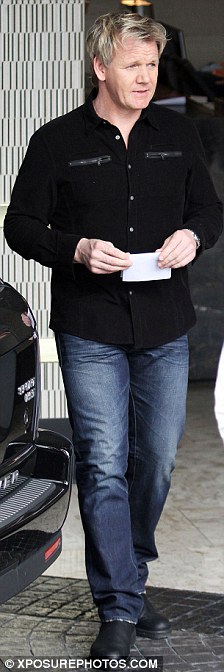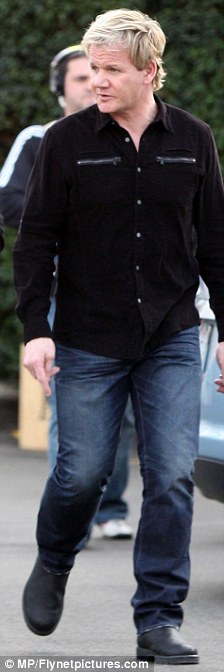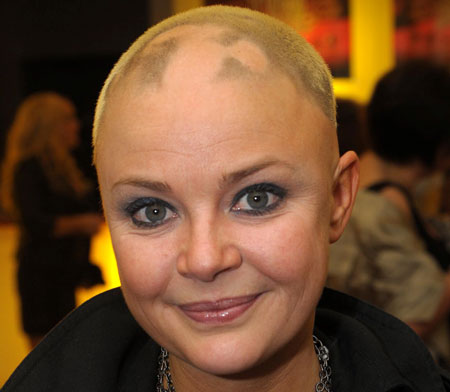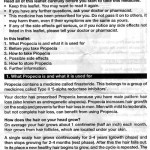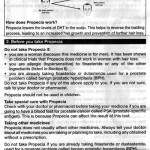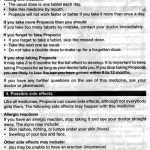Was it really worth it, Gordon? Ramsay shows off his hair transplant for the first time… but does he look any different?
01.02.2011 in UncategorizedHe might have had a hair transplant in an attempt to make himself look and feel younger.
But after spending tens of thousands of pounds on surgery to boost his follicles, Gordon Ramsay’s hair doesn’t appear to look any different than before.
The celebrity chef showed off his surgically enhanced locks for the first time yesterday as he arrived on set of his TV show in Los Angeles.

Backcombed: Gordon Ramsay’s unveils his bouffant hair transplant for the first time
Just before the New Year, the 44-year-old spent 12 hours at a clinic in the city having follicles removed from lush patches of his scalp before they were reinserted where his hairline is thinning.
Gordon debuted his new hair as he arrived for a day’s filming of his US-based show Kitchen Nightmares.
Vanity: Gordon’s £30,000 hair op doesn’t appear to have made any big difference
And while it looked slightly more bouffant than before, it really didn’t look that much different to his previous hairstyle.
Last week he was snapped leaving the Alvi Armani centre in Beverly Hills wearing a black surgical-style cap on his swathed head.
A source said: ‘While his hair may not have been obviously receding, it had become an issue for him.
Spot the difference? Apart from it being a more natural looking blonde, Ramsay’s hair doesn’t look much different to how it did a year ago (R)
‘Some will call it vanity – but to TV producers and Gordon it’s a pre-emptive action to stop him suddenly going on TV with obvious thinning.
‘It’s better to act now than have countless pictures and comment scrutinising his hairline in years to come.’
Hair transplant guru Dr Antonio Armani – the clinic’s founder – is believed to have performed a radical new treatment on Ramsay called ‘follicular unit extraction’.
Puffy-faced: Ramsay’s swollen eyes and cheeks were very prominent as he, his family and the Beckhams went to a safari park
Swollen: Ramsay looks like he’s struggling to see out of his eyes as he and David Beckham make a coffee run
Performed under local anaesthetic, it requires no stitches – and leaves no scars.
But it may have contributed to Ramsay’s rather puffy face which he sported on a day out to a safari park in North Carolina with the Beckhams.
Ramsay’s eyes were almost hidden under the swelling of his face as he, wife Tana and their four children, Victoria and David Beckham and their three sons walked and rode round the park looking at the animals, and even had a close encounter with a giraffe.
Fun day out: Ramsay walks ahead as wife Tana and their children and Victoria and David Beckham stroll along behind

Hello there: A giraffe comes to greet the famous group as they take a ride round the animal park
And one medical expert said his transplant procedure probably left him with the swollen after-effect.
Speaking to the Sun, Dr Mabroor Bhatti, of Transform cosmetic surgery, said: “It would appear he has had a reaction from his heavy hair transplant.
“Patients can experience swelling which can work itself from the head to the bottom of the face. Gordon seems to have suffered more than usual.”
It was just another in a line of procedures the fiery and foul-mouthed chef has had done in the past year.
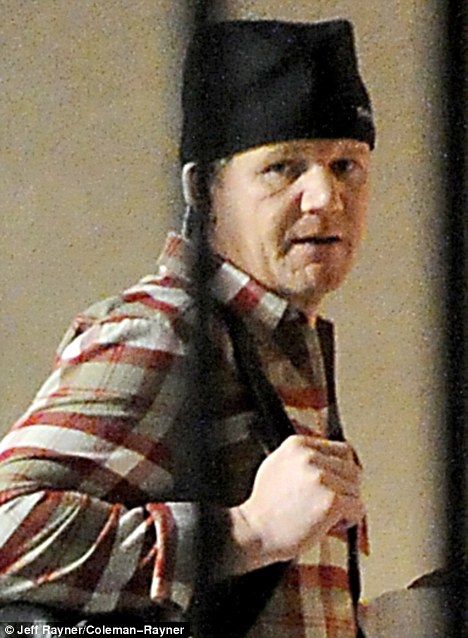
Under wraps: Ramsay is snapped leaving an LA clinic after his hair transplant last week
Last summer, he unveiled a gleaming white strip of perfect teeth, prompting whispers that he may have treated himself to dental veneers.
The procedure, which costs between £7,000 and £10,000, involves a thin layer of porcelain being placed over the existing teeth, making them whiter and more even.
Snd in 2009, on the advice of X Factor boss Simon Cowell, Ramsay had Botox injections in his face that filled in the deep crevices in his chin and lines on his forehead.

Smooth: Ramsay showed off his Botoxed face and a mouth of gleaming white veneers on TV in August last year.
Do you have Hair Loss Problems, read our Hair Loss Help





